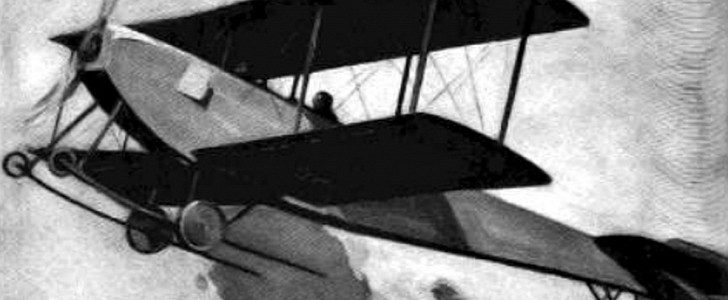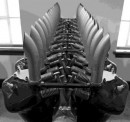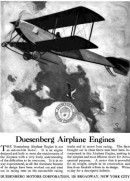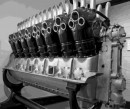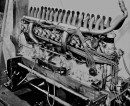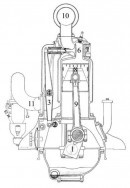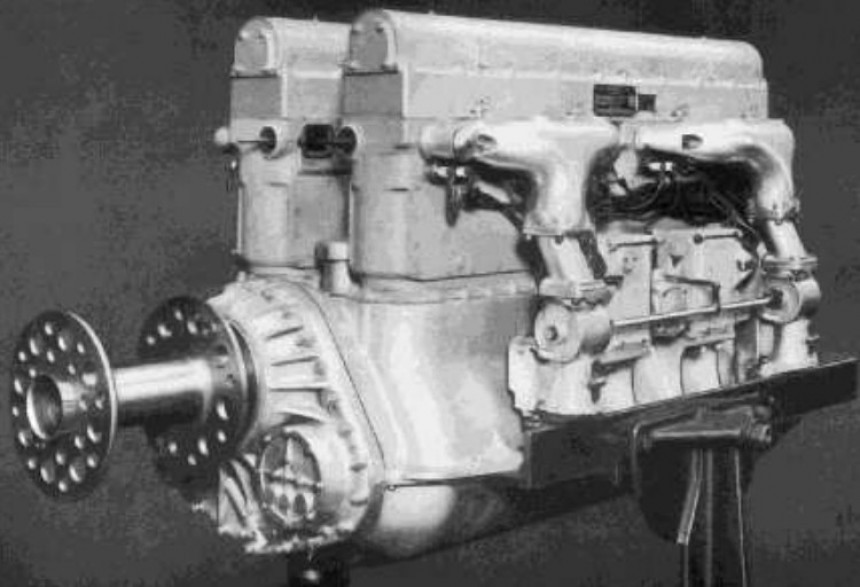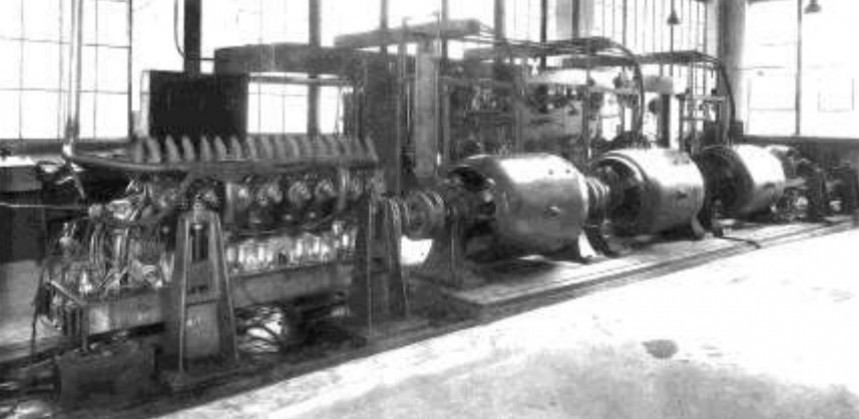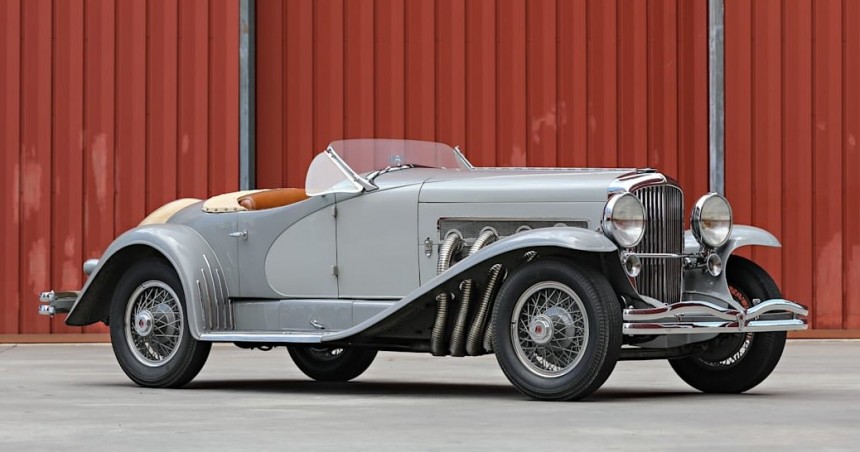Duesenberg is mainly famous for three things. The mighty Model J car, introduced in 1928, its three Indianapolis 500 wins, and for being one of America's greatest luxury carmakers before the Great Depression settled in. But the Indiana-based company had many other achievements to brag about before it started making road-going automobiles.
You see, the brand was set up by German-American brothers August and Frederick Duesenberg as an engine and race car manufacturer. The company was founded in 1913, and its first race car tackled the Indianapolis 500 just one year later, in 1914. Eddie Rickenbacker drove it to a 10th-place finish against stiff competition.
Duesenberg didn't start making passenger cars until 1921, when August and Fred moved to a new headquarters and factory in Indianapolis.
Most people don't know that between the mid-1910s and the moment it was moved from Minnesota to Indiana, Duesenberg built aviation and marine engines, including an experimental mill that displaces a massive 3,393 cubic inches (55.6-liter).
When the United States joined World War 1 in 1917, Duesenberg built a new manufacturing plant in New Jersey and was awarded a contract to built 2,000 Liberty aircraft engines. Used in various Curtis and Douglas applications, the V12 was eventually built by Lincoln.
Duesenberg, instead, was commissioned to put together Bugatti U-16 mills when the U.S. acquired a license for them.
But production and development at the Duesenberg plant were slower than anticipated, and only a few of them rolled off the assembly line.
Meanwhile, Fred Duesenberg wanted to develop a much more powerful aircraft engine, one that would develop twice as much as the U16, rated at an impressive 410 horsepower.
And Fred had quite the massive plan. Together with his engineering staff, he designed a 45-degree V16 with a bore and stroke of six by 7.5 inches. The mill had no fewer than 55.6 liters, which made it almost 2.5 times larger than the Bugatti U16.
Duesenberg obviously used some of the know-how it had acquired developing racing engines. The V16 featured three valves per cylinder, with one for intake and two for exhausts, all operated through the company's signature walking beam mechanism.
The latter was essentially a long rocker arm that transferred motion from the camshaft in the block to the valves in the cylinder head.
Fuel came via four Miller carburetors, while the spark was provided by a twin ignition, a pair of battery-powered Delco distributors, and a couple of Dixie magnetos.
Called the Model H, the monstrous engine was expected to generate 700 horsepower in direct-drive form and about 800 horses with a gear reduction unit.
But initial tests revealed that the V16 could actually hit the 900-horsepower mark, which would have made it the most powerful aircraft engine of the era.
But much like the Daimler-Mercedes W18, which never went into production, the Duesenberg Model H also never got to power an actual aircraft.
The main reason is that its first official military test was scheduled in late December 1918. As World War I came to an end in November, the U.S. Army lost interest in the promising engine.
What's more, at more than seven feet (2.13 meters) long, the Model H was simply too large for any winged aircraft that the United States was flying at the time. It remains the company's largest displacement engine, bigger than even the inline-12 marine mill that the Duesenberg brothers had built in 1914 (3,221 cubic inches/52.8 liters).
Two Model H engines have survived to this day, and both are being showcased in museums. You'll find one at the Smithsonian National Air and Space Museum in Washington D.C., while the second engine is at the Auburn Cord Duesenberg Museum in Auburn, Indiana.
With WWI over, Duesenberg abandoned aircraft engines and went on to build passenger cars.
It rolled out the Model A in 1921, followed by the rare Model X in 1926. In 1928, Duesenberg introduced the Model J, which included the SSJ, a short-wheelbase, supercharged version that delivered close to 400 horsepower in the 1930s.
Duesenberg also made history at the Indy 500, winning the race on three occasions in 1924, 1925, and 1927.
With the market for expensive luxury cars almost ruined by the Great Depression, Duesenberg closed its doors in 1937. Its cars are now among the most expensive American classics, but the Model H engine remains a forgotten giant.
Duesenberg didn't start making passenger cars until 1921, when August and Fred moved to a new headquarters and factory in Indianapolis.
Most people don't know that between the mid-1910s and the moment it was moved from Minnesota to Indiana, Duesenberg built aviation and marine engines, including an experimental mill that displaces a massive 3,393 cubic inches (55.6-liter).
Duesenberg, instead, was commissioned to put together Bugatti U-16 mills when the U.S. acquired a license for them.
But production and development at the Duesenberg plant were slower than anticipated, and only a few of them rolled off the assembly line.
And Fred had quite the massive plan. Together with his engineering staff, he designed a 45-degree V16 with a bore and stroke of six by 7.5 inches. The mill had no fewer than 55.6 liters, which made it almost 2.5 times larger than the Bugatti U16.
Duesenberg obviously used some of the know-how it had acquired developing racing engines. The V16 featured three valves per cylinder, with one for intake and two for exhausts, all operated through the company's signature walking beam mechanism.
Fuel came via four Miller carburetors, while the spark was provided by a twin ignition, a pair of battery-powered Delco distributors, and a couple of Dixie magnetos.
Called the Model H, the monstrous engine was expected to generate 700 horsepower in direct-drive form and about 800 horses with a gear reduction unit.
But much like the Daimler-Mercedes W18, which never went into production, the Duesenberg Model H also never got to power an actual aircraft.
The main reason is that its first official military test was scheduled in late December 1918. As World War I came to an end in November, the U.S. Army lost interest in the promising engine.
Two Model H engines have survived to this day, and both are being showcased in museums. You'll find one at the Smithsonian National Air and Space Museum in Washington D.C., while the second engine is at the Auburn Cord Duesenberg Museum in Auburn, Indiana.
With WWI over, Duesenberg abandoned aircraft engines and went on to build passenger cars.
Duesenberg also made history at the Indy 500, winning the race on three occasions in 1924, 1925, and 1927.
With the market for expensive luxury cars almost ruined by the Great Depression, Duesenberg closed its doors in 1937. Its cars are now among the most expensive American classics, but the Model H engine remains a forgotten giant.
